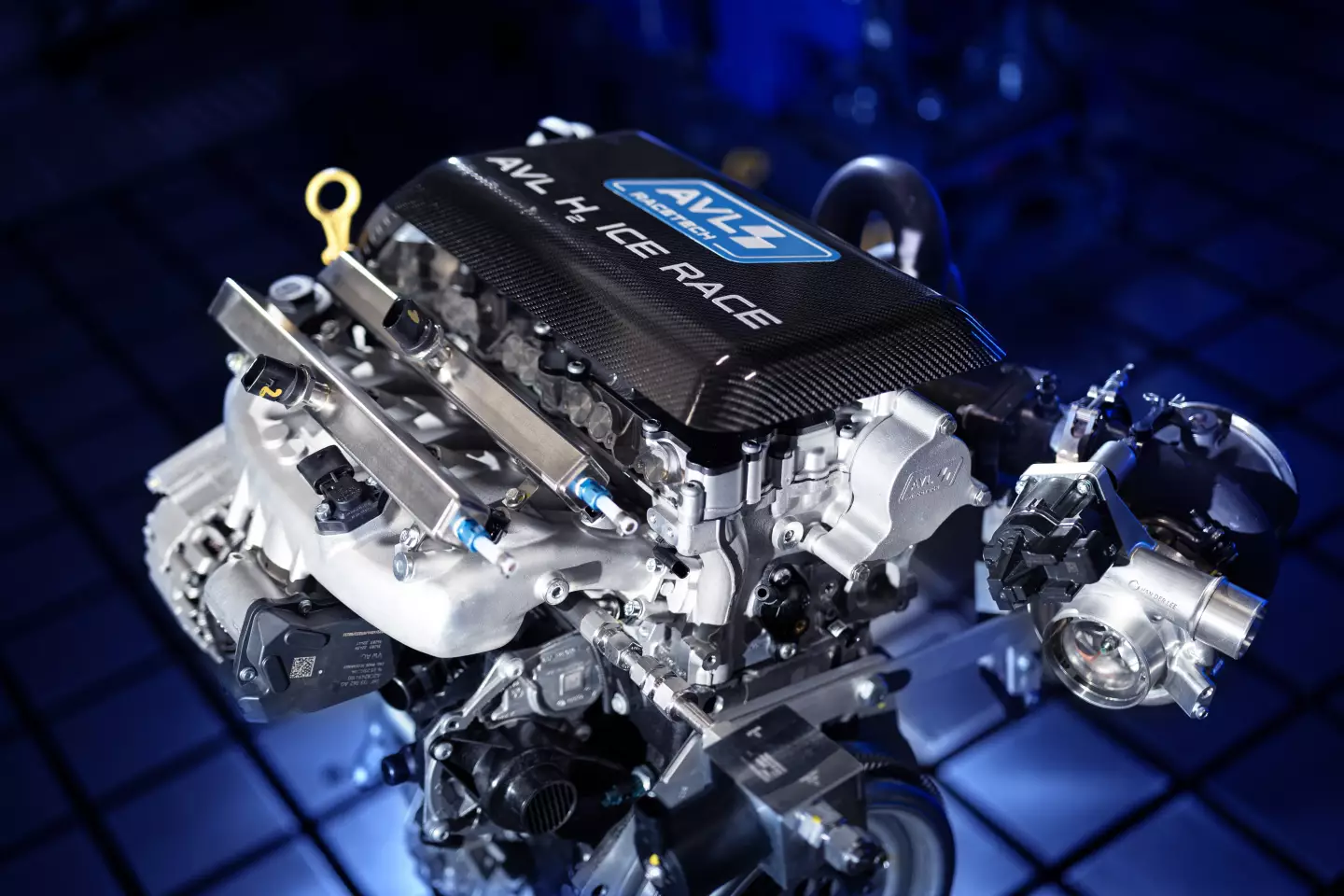Austrian mobility technology company AVL had a pretty good day for itself earlier this month, when it confirmed simulations that showed its prototype 2.0-liter turbo hydrogen race engine developing over 200 hp-per-liter. AVL uses a water-injection system alongside its turbocharger to moderate combustion for safer burn and improved power production ... and so far it's working like a charm.
Most of the fanfare around automotive hydrogen has been related to fuel cell-electric powertrains, but hydrogen combustion engines have slowly been entering the serious phase of discussion. They're not without their own set of obstacles, however, even in a motorsport setting in which the non-existent roadside H2 fueling infrastructure isn't an issue.
As AVL points out, the typical hydrogen ICE suffers from low performance numbers owing to lean burn, combustion that involves a high air-to-fuel ratio. While lean burn can be a positive that improves fuel economy and lowers emissions, it also leads to lower power output, an issue particularly problematic for a race engine.

When AVL announced last year that its motorsport division AVL Racetech was developing a hydrogen racing engine, it explained that the design would use a water injection system to boost power. It says its intelligent PFI water injection system boosts water into the engine's intake air, thwarting the possibility of premature ignition and lowering the air-fuel ratio from a lean burn to a stoichiometric level. A wastegate turbocharging system supplies the air.
AVL's setup system takes care of lean burn and the low output issues thereof, resulting in a hydrogen ICE with more power production. This month's testing of the prototype 2.0-liter turbo four-cylinder verified the top values from AVL's earlier simulations, seeing the engine develop 410 hp (302 kW) at 6,500 rpm and 369 total lb-ft (500 Nm) between 3,000 and 4,000 rpm. AVL has previously noted that an output of roughly 201 hp-per-liter (150 kW per) would make the engine competitive in modern close-to-production race classes.

"The results achieved by our H2 racing engine confirm that we are able to deliver an extremely competitive package with this technology," said AVL motorsport director Ellen Lohr after testing. "The goal of AVL Racetech is to lead motorsport into a sustainable future. With the development of the first racing engine developed under our own name, we have taken another step closer to achieving this vision."
Hydrogen combustion does not release any carbon emissions, but it does still release nitrous oxides (NOx), particularly at stoichiometric level – lean-burn engines help lower these emissions. While a hydrogen fuel cell would, therefore, be a cleaner, zero-emissions way of proceeding, AVL believes that a hydrogen combustion engine will ultimately prove more economical for motorsport teams because of the simpler adaptation when making the transition from gasoline ICEs. And they'll still have all the mechanical noise and feel of classic motorsport.
AVL's next step will be to test the 2.0-liter H2 turbo unit in an actual car on the racetrack.






